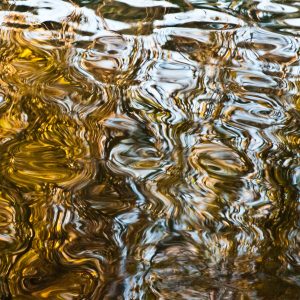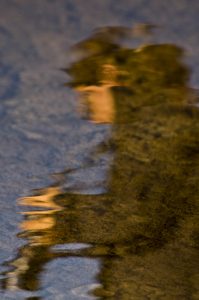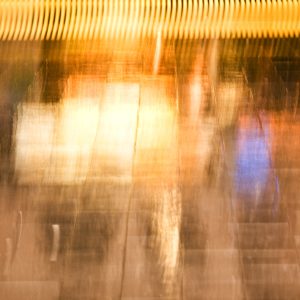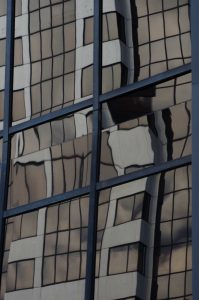Reflections: The Impressionist’s Mirror
There’s something magical about the moment when reality doubles itself – when the world above meets its watery twin below, creating a symphony of light and shadow that has captivated artists for centuries. In the realm of impressionist photography, reflections aren’t merely visual echoes; they’re portals into a dreamlike dimension where the ordinary becomes extraordinary.
The Poetry of Doubled Worlds
Claude Monet understood this intimately when he painted his water lilies, watching how the surface of his garden pond became a canvas within a canvas. The reflection didn’t simply mirror what was above – it transformed it, softening edges, shifting colours, and creating an entirely new interpretation of reality. This is the essence of what we pursue when we photograph reflections through an impressionist lens.
When light dances across water, it doesn’t just bounce back unchanged. It carries with it the movement of the surface, the subtle variations in depth, and the ever-changing atmospheric conditions. A building reflected in a puddle after rain becomes more than architecture – it becomes liquid poetry, its rigid lines now flowing like brushstrokes across the wet pavement.
The Science Behind the Beauty
Understanding reflection is understanding light itself. When photons strike a surface, they don’t simply return in perfect formation. Water, with its gentle undulations, creates a living mirror that breathes and moves. Glass, with its varying thickness and imperfections, adds its own character to what it reflects. Even polished metal surfaces contribute their unique warmth or coolness to the light they return to our cameras.
The impressionist photographer learns to read these surfaces like a musician reads a score. Is the water perfectly still, creating a mirror-like double exposure? Or is it gently rippled, turning sharp architectural lines into soft, painterly waves? Each condition offers its own creative possibilities.
Finding Reflections in Unexpected Places
While lakes and rivers provide obvious opportunities, the impressionist eye sees reflective potential everywhere. Rain-slicked streets transform city lights into flowing rivers of colour. Shop windows create layered compositions where the interior scene mingles with reflections of the bustling street outside. Even the chrome bumper of a vintage car can become a distorted fun-house mirror, reimagining the world in curves and unexpected perspectives.
The key lies in training yourself to see beyond the literal. That puddle isn’t just water – it’s a window into an alternate reality where buildings float weightlessly and trees grow downward into infinite depths. The reflection in someone’s sunglasses isn’t just a tiny mirror – it’s a complete world captured in miniature, carrying the story of everything the wearer sees.
Technical Considerations for the Artistic Eye
Working with reflections requires a delicate balance between technical precision and artistic intuition. The angle of your camera determines not just what appears in the reflection, but how distorted or faithful it will be. A low angle might capture both the subject and its reflection with equal clarity, while a higher angle might let the reflection dominate, relegating the “real” world to a minor role in the composition.
Polarising filters become your allies and adversaries simultaneously. They can eliminate unwanted reflections when you want to see through the surface, but they can also kill the very reflections that make your image sing. Learning when to use them – and when to deliberately ignore them – is part of developing your impressionist vision.
Light direction matters enormously. Side lighting creates dramatic contrasts between the illuminated surfaces and their darker reflections. Backlighting can turn water into liquid mercury, while overcast conditions provide the soft, even illumination that makes every reflection appear painted with watercolours.
The Emotional Language of Reflected Light
Reflections speak to something deep in our psyche. They suggest duality, contemplation, and the thin boundary between reality and dreams. When Narcissus glimpsed his reflection in the pool, he wasn’t just seeing his face – he was confronting the nature of identity itself. Our photographs can tap into this same psychological power.
A lone figure reflected in a rain puddle speaks to solitude and introspection. A bustling cityscape mirrored in the glass facade of a skyscraper suggests the layered complexity of urban life. Children playing beside a pond, their joy doubled in the water below, amplifies the sense of carefree happiness. The reflection doesn’t just repeat the scene – it amplifies its emotional resonance.
Mastering the Impressionist Approach
The impressionist photographer embraces imperfection. While a traditional landscape photographer might wait for perfectly still water to create a flawless mirror, the impressionist celebrates the gentle distortions that movement brings. Those ripples that blur the reflection aren’t flaws – they’re brushstrokes painted by nature itself.
Colour becomes more fluid in reflections. The warm tones of sunset don’t just appear in the sky – they pool in every reflective surface, creating a unified colour palette that ties the entire image together. Blue hour transforms windows into glowing gems, their reflections creating points of light that dance across wet pavement like scattered stars.
Timing becomes crucial. The brief moments after rain, when every surface gleams with potential. The golden hour when warm light sets everything ablaze, including its reflections. The blue hour is when artificial lights begin to compete with the fading sky, creating a complex interplay of colour temperatures reflected in windows, puddles, and polished surfaces.
Beyond the Surface
Great reflection photography transcends mere documentation. It captures the ephemeral quality of light itself – how it bends, shifts, and transforms as it travels from source to eye. The impressionist understands that the reflection is not lesser than the original; it’s a reinterpretation, a creative collaboration between light, surface, and observer.
In our digital age, where perfect mirror images can be created with software, the authentic imperfections of natural reflections become even more precious. The slight asymmetry caused by water movement, the colour shifts introduced by tinted glass, the distortions created by curved surfaces – these “flaws” are actually signatures of authenticity, proof that light truly danced across these surfaces to reach your camera.
The Mirror’s Gift
Every reflection is a gift from light itself – a bonus image that exists only because photons chose to bounce rather than absorb, to return rather than disappear. The impressionist photographer learns to recognize these gifts and capture them with the reverence they deserve.
When you next encounter a reflection, pause before lifting your camera. Look beyond the obvious mirror image and see the poetry that light has written on the surface before you. Notice how colours shift and blend, how edges soften or sharpen, how movement creates brushstrokes across the reflected scene.
The world offers us countless mirrors, each reflecting not just images but possibilities. In mastering the art of photographing reflections, we learn to see with doubled vision – capturing not just what is, but what could be when light decides to dance.
Ready to dive deeper into the art of capturing reflections?
Watch: “Reflections & Light Photography Workshop – Master Creative Reflection Techniques“ on YouTube for hands-on techniques and field demonstrations that will transform how you see and capture reflected light.
Read: Impressionist Photography Techniques II – This comprehensive guide explores advanced methods for creating painterly effects with natural light, including an entire chapter dedicated to mastering reflections in various conditions and surfaces.
Transform your photography from mere documentation to artistic expression. Let light be your brush, and reflections your canvas.




